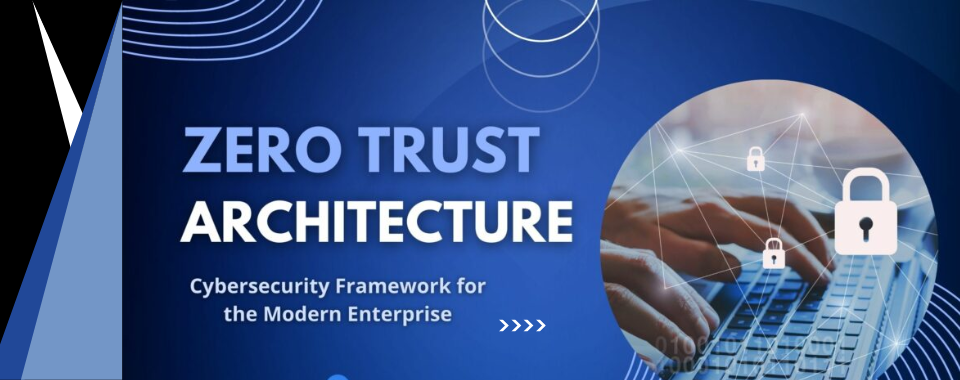
One of the most innovative and effective frameworks emerging today is Zero Trust Architecture (ZTA). But what exactly is Zero Trust, and why should you care about it? Let’s dive in!
What is Zero Trust Architecture?
Zero Trust Architecture is a security framework that challenges the traditional notion of trusted internal networks. In a Zero Trust model, trust is never assumed, no matter where the request originates from — whether inside or outside the network. Instead, every entity, be it a user, device, or application, must undergo continuous validation before access is granted.
By enforcing Zero Trust principles, organizations can ensure that their IT infrastructure remains secure, even as they shift towards cloud-based environments, adopt IoT technologies, and enable remote work.
Key Elements of Zero Trust Architecture
Zero Trust is not just a buzzword — it’s a comprehensive approach. Let’s break down its core components:
- Identity and Access Management (IAM): Ensuring only the right individuals and devices can access resources.
- Multi-Factor Authentication (MFA): Adding an extra layer of security by requiring multiple verification methods.
- Micro-Segmentation: Dividing the network into smaller, isolated segments to reduce risk.
- Encryption: Protecting data in transit and at rest to prevent unauthorized access.
- Real-Time Monitoring: Continuously watching for any unusual activity to detect potential threats early.
Together, these elements create a robust framework for enforcing Zero Trust across an organization.
Why Zero Trust Matters More Than Ever
In the past, businesses often relied on the perimeter-based security model, where internal networks were trusted by default, and external ones were considered hostile. However, with the rise of cloud computing, remote work, and the Internet of Things (IoT), the network perimeter has become much more porous. This means that traditional security measures are no longer enough to protect sensitive data.
Zero Trust Architecture provides a new way forward by eliminating implicit trust in any entity, regardless of where it is located. Every request, whether from a user, device, or application, must be validated before access is granted — essentially assuming that breaches are inevitable and focusing on limiting their impact.
Three Core Principles of Zero Trust
1. Verify Explicitly
Verification is continuous, not just at the point of access. Every time a user or device tries to access a resource, they must pass through a rigorous authentication and authorization process. Think of it like having a security checkpoint every time you try to enter a building, no matter how many times you’ve been inside.
How does this look in practice?
- Multi-Factor Authentication (MFA)
- Device health checks (Is your device secure enough to connect?)
- Behavioral analysis (Is this behavior consistent with a typical user?)
2. Enforce Least Privilege Access
The idea here is simple: users and devices should only be granted access to the minimum resources necessary to perform their tasks. By adhering to this principle, organizations can dramatically reduce their exposure to attacks — limiting what malicious actors can access, even if they manage to infiltrate the network.
For example:
- Just-in-time (JIT) access allows users to access only the systems they need, only for the time they need it.
- Granular access controls ensure that even if one account is compromised, it won’t lead to widespread damage.
3. Assume Breach
Zero Trust is built on the assumption that breaches are inevitable. Rather than being reactive, organizations must proactively minimize the impact of a breach by containing it quickly. If an attacker infiltrates one part of the network, they shouldn’t be able to roam freely.
This principle involves:
- Micro-segmentation to isolate sensitive systems.
- Real-time monitoring to detect anomalies.
- Encryption to protect data even if it is intercepted.
The Benefits of Zero Trust Architecture
ZTA isn’t just a security buzzword. It offers tangible benefits for modern organizations:
- Enhanced Security: By continuously validating access and enforcing strict controls, ZTA minimizes the risk of unauthorized access and breaches.
- Protection Against Data Breaches: ZTA reduces the blast radius of a breach, making it harder for attackers to move laterally within the network.
- Improved Visibility: Continuous monitoring and logging give IT teams real-time insight into network activity, helping them identify potential threats quickly.
- Scalability: As businesses grow, Zero Trust scales seamlessly to support more users, devices, and applications without compromising security.
- Support for Remote Work: ZTA provides secure access to remote workers and third-party partners, without relying on traditional VPNs.
The Five Pillars of Zero Trust
To implement Zero Trust successfully, organizations should focus on these five foundational pillars, each designed to secure a specific aspect of the organization’s operations:
- Identity: Managing and securing users’ identities through solutions like Single Sign-On (SSO) and Multi-Factor Authentication (MFA).
- Devices: Ensuring that all devices connecting to the network are properly validated and meet security standards.
- Networks: Using micro-segmentation and end-to-end encryption to secure internal and external network traffic.
- Applications and Workloads: Continuously monitoring and validating the behavior of applications to detect suspicious activities.
- Data: Protecting sensitive data across its lifecycle — whether it’s at rest, in use, or in transit.
- Visibility and Analytics: Track user activities, devices, and network traffic to spot anomalies.
- Automation and Orchestration: Automatically enforce security policies and respond to threats in real time.
The Seven Core Pillars of Zero Trust
The U.S. Cybersecurity and Infrastructure Security Agency (CISA) outlines seven critical pillars to help guide the implementation of ZTA, adding focus areas like Visibility and Analytics and Automation and Orchestration. These extra layers enhance security and ensure organizations can react quickly to threats.
How to Implement Zero Trust Architecture
Ready to take the plunge? Here’s a step-by-step guide to implementing Zero Trust Architecture:
- Identify Assets: Create a complete inventory of all your digital assets and assess their security.
- Verify Users and Devices: Implement robust authentication for all users and devices.
- Map Workflows: Define access requirements and workflows for users, devices, and applications.
- Define and Automate Policies: Set granular access policies based on context, such as location, time, and device status.
- Test, Monitor, and Maintain: Regularly test your Zero Trust environment and continuously monitor for any anomalies.
Real-World Examples of Zero Trust in Action
Zero Trust isn’t just theory; it’s already being used by organizations worldwide. Here’s how:
- Remote Access Security: Securely extend access to cloud applications and resources, even for employees working remotely.
- Insider Threat Detection: Zero Trust helps detect suspicious activity from both external hackers and malicious insiders.
- Shadow IT Control: Block or control the use of unauthorized apps and devices.
- Supply Chain Security: Extend secure access controls to external partners and vendors.
Conclusion: Embrace Zero Trust for a More Secure Future
The move towards Zero Trust Architecture is no longer optional — it’s a necessity in a world filled with increasingly sophisticated cyber threats. By embracing ZTA, businesses can future-proof their IT security, ensuring that they remain protected no matter what.
The future of security is Zero Trust — and Alpheric is ready to lead the way!








